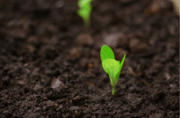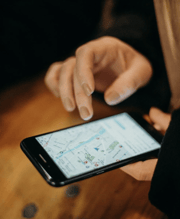The simple way to claim free seeds from a government program
- Replies 0
Buying seeds might not seem like a major expense—until you're filling a cart with herbs, heirlooms, and all the kale you can grow.
Gardeners across the country are realizing that a spring planting spree can quickly get pricey. But lesser-known programs and community workarounds could get you all the seeds you need, without spending a cent.
Here's what frugal gardeners need to know about getting free seeds, including straight from the government.
The US Department of Agriculture operates something called the National Plant Germplasm System (NPGS), which offers seeds online through a searchable public database.
If you’re a researcher, educator, or affiliated with a public garden, you can order from thousands of varieties—everything from rare legumes to dozens of types of kale.
Just type in a plant name, look for listings with a shopping cart icon, and submit your request. But here's the catch: the government isn't looking to supply casual home gardeners with free seeds in bulk.
According to the USDA, home gardeners requesting seeds "strictly for home use" might be turned away if they can’t justify why they need non-commercial varieties.
Their official stance is that the program isn’t meant to compete with businesses or heirloom sellers.
So while the seeds are technically free, you’ll need to explain your purpose—especially if you’re not affiliated with a school, seed-saving group, or nonprofit project.
In short, this isn't a loophole for skipping the seed aisle at your local nursery.
Outside of the USDA, there are plenty of grassroots ways to score free or cheap seeds. Online gardening forums and Facebook groups are filled with hobbyists eager to trade or give away extras, especially in the spring.
Some sellers on Etsy also offer affordable seed bundles, though you’ll need to dig through listings to find good value.
Towns sometimes give away seed packs during environmental holidays like Arbor Day, and seed swap events—both in-person and virtual—are popping back up post-pandemic.
You can also just ask. Friends, family, or neighbors often have seeds left over from previous seasons, and most seasoned gardeners love sharing with someone just starting out.
Birthdays, holidays, and housewarmings are a perfect excuse to ask for seeds instead of more clutter.
And if you’ve got a green thumb and some patience, nothing beats saving your own seeds from year to year—it’s free, sustainable, and deeply satisfying.
Read next:

Do you have your own tips for finding free or affordable seeds? Let us know in the comments—gardeners love a good hack, and your ideas might help someone grow something new this season.
Gardeners across the country are realizing that a spring planting spree can quickly get pricey. But lesser-known programs and community workarounds could get you all the seeds you need, without spending a cent.
Here's what frugal gardeners need to know about getting free seeds, including straight from the government.
The US Department of Agriculture operates something called the National Plant Germplasm System (NPGS), which offers seeds online through a searchable public database.
If you’re a researcher, educator, or affiliated with a public garden, you can order from thousands of varieties—everything from rare legumes to dozens of types of kale.
Just type in a plant name, look for listings with a shopping cart icon, and submit your request. But here's the catch: the government isn't looking to supply casual home gardeners with free seeds in bulk.
According to the USDA, home gardeners requesting seeds "strictly for home use" might be turned away if they can’t justify why they need non-commercial varieties.
Their official stance is that the program isn’t meant to compete with businesses or heirloom sellers.
So while the seeds are technically free, you’ll need to explain your purpose—especially if you’re not affiliated with a school, seed-saving group, or nonprofit project.
In short, this isn't a loophole for skipping the seed aisle at your local nursery.
Outside of the USDA, there are plenty of grassroots ways to score free or cheap seeds. Online gardening forums and Facebook groups are filled with hobbyists eager to trade or give away extras, especially in the spring.
Some sellers on Etsy also offer affordable seed bundles, though you’ll need to dig through listings to find good value.
Towns sometimes give away seed packs during environmental holidays like Arbor Day, and seed swap events—both in-person and virtual—are popping back up post-pandemic.
You can also just ask. Friends, family, or neighbors often have seeds left over from previous seasons, and most seasoned gardeners love sharing with someone just starting out.
Birthdays, holidays, and housewarmings are a perfect excuse to ask for seeds instead of more clutter.
And if you’ve got a green thumb and some patience, nothing beats saving your own seeds from year to year—it’s free, sustainable, and deeply satisfying.
Read next:
- Don’t let your garden dry out while you’re on vacation—here’s how to keep it thriving while you’re away
- The underrated layout secret that turns average gardens into stunning showpieces
Key Takeaways
- The USDA’s National Plant Germplasm System offers free seeds but primarily to educators, scientists, and public organizations.
- Home gardeners are generally discouraged from requesting seeds for personal use without a clear, justified purpose.
Facebook groups, Etsy, seed swaps, and environmental events are popular alternative ways to find seeds for free or cheap. - Saving your own seeds and asking friends, family, or gift-givers can also help cut gardening costs without sacrificing variety.







